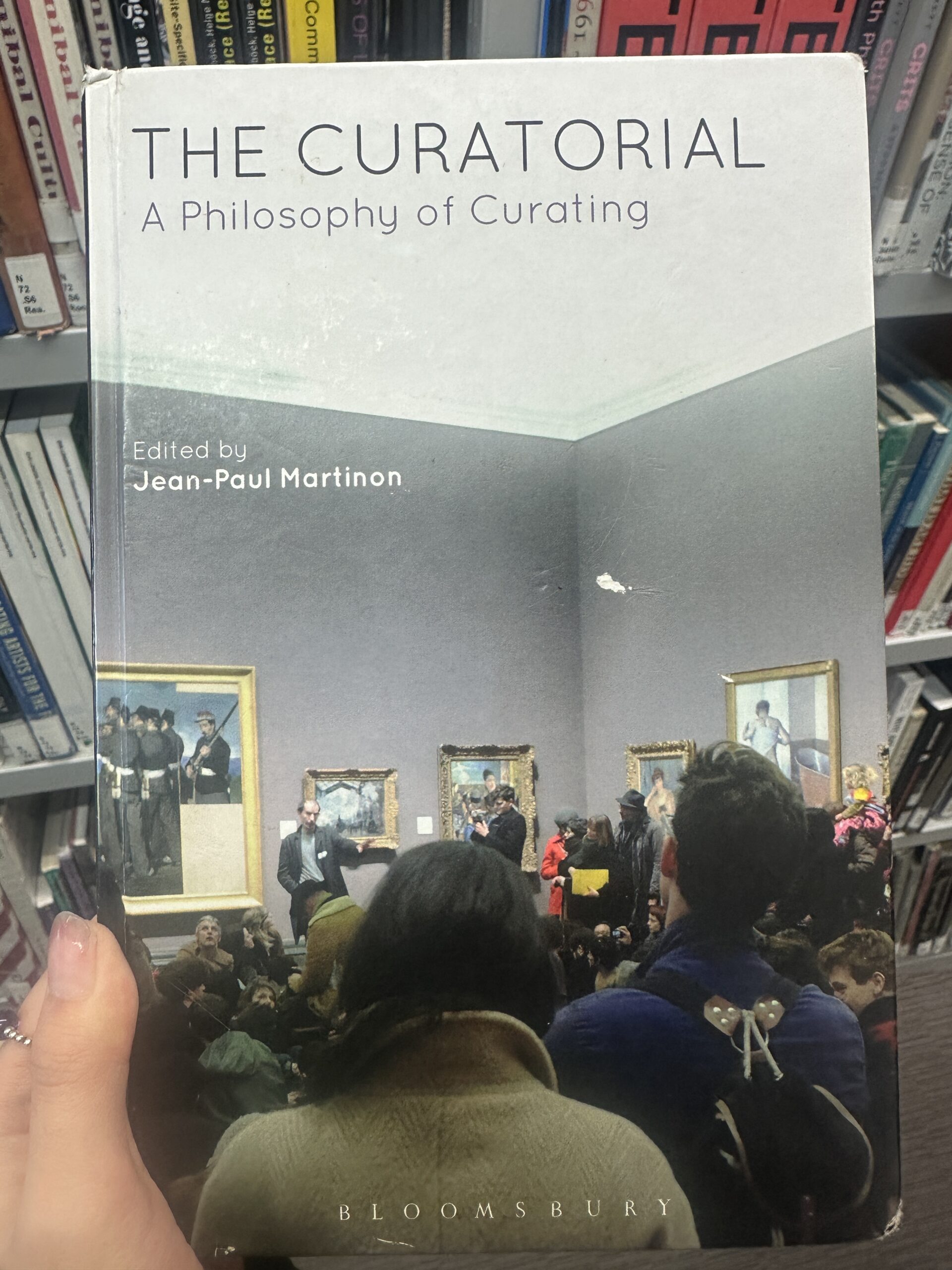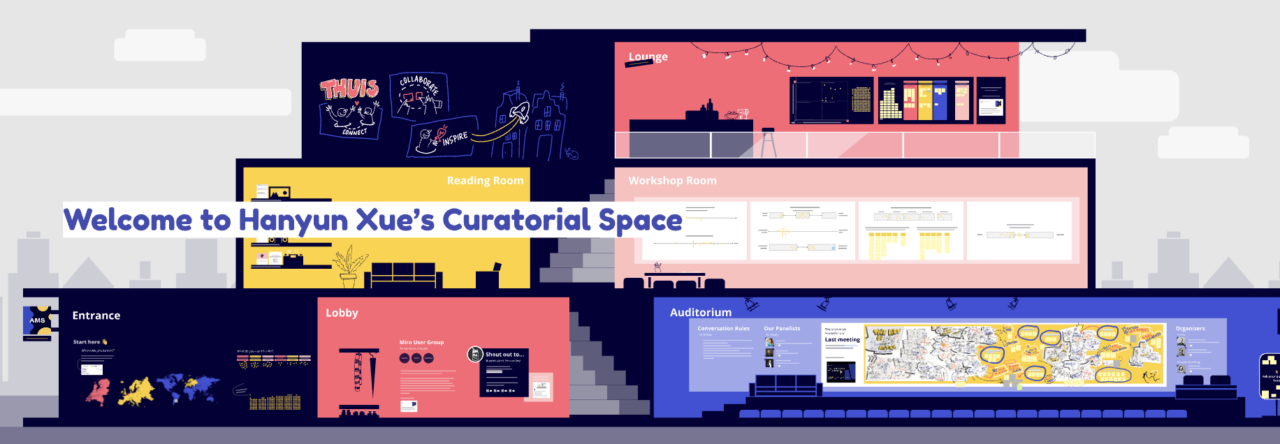 Peer Review: Chuyue Xu’s Curatorial Project “Female Narratives in Opera: History and Liberation”
Peer Review: Chuyue Xu’s Curatorial Project “Female Narratives in Opera: History and Liberation”
Chuyue Xu’s blog :http://Chuyue Xu / Curating (2024-2025)[SEM2]
Opening – A Curatorial Conversation
Chuyue, reading through your blog from Week 1 to Week 8, I was drawn to the clarity and depth of your project.
You’ve taken opera—a grand, classical, and often difficult-to-access art form—and reimagined it as a lens through which to explore the awakening of female consciousness. This perspective is sharp, ambitious, and deeply personal.
What touched me most was watching your project develop from an experimental idea in Week 3 (“Can I integrate my music background into curating?”) into a multisensory, socially grounded narrative by Week 8. It reminded me of Bruce W. Ferguson’s words: “Exhibitions are narratives which use art objects as elements in institutionalized stories” (Ferguson 1996, 128). And your project, through its curatorial approach, is precisely challenging those institutional narratives that have long pushed women to the margins.
Because I truly appreciate your theme, I didn’t want to give you superficial feedback. I went to the course library and spent time reading materials on feminist representation, curatorial narrative, participation, and exhibition space—thinking about how your exhibition could build even further on the depth it already has.
I hope the following reflections and suggestions will be helpful to you.
Section Two: Strengths – Feminist Narratives and Critical Engagement
What I find most striking about your project is how you reframe the long-standing representations of women in opera into a feminist narrative of reclamation. By placing four operas—from Orfeo to Carmen—along a historical timeline, you reveal a trajectory in which female characters evolve from being rescued to becoming speakers of their own stories.
This dialogical curatorial structure echoes the kind of temporal and spatial interplay that Mieke Bal explores in her writing on visual narrative.
Equally powerful is how you incorporate critical interaction as part of a curatorial turn toward education. As Simon Sheikh notes, this shift is about fostering new forms of self-reflection and critique (O’Neill and Wilson 2010, 12).
Your costume try-on zone, combined with the opportunity for visitors to recite opera lines, allows people to not only experience history firsthand but perhaps even question gender itself: Can identity be performed?
Section Three: Deeper Suggestions — From Time to Space to Sound
1. A timeline is not just history—it’s emotional rhythm
Your idea of connecting feminist movements with the history of opera through a timeline is smart and effective. But what if the timeline functioned more like a theatrical structure?
Could the four operas be staged as four distinct “scenes,” each with its own lighting, color palette, or sound atmosphere to create an emotional arc?
This would immerse your audience in a shifting emotional landscape—not just inform them.
2. Add critical pauses into the audience experience
Your costume try-ons and voice acting zones are already excellent interactive features. Still, I suggest adding a moment of reflection afterward.
For example, a comment wall or a private “recording booth” could ask: “How did it feel to wear this costume?” or “Did voicing this line change how you see the character?”
This kind of pause transforms participation into internal insight.
3. Juxtapose non-Western female voices
To broaden the scope of your feminist framework, you might consider including a non-Western example.
Placing Mu Guiying from the Chinese opera “Mu Guiying Takes Command” alongside Susanna from The Marriage of Figaro could more sharply reveal how patriarchal suppression of female leadership cuts across cultures.
This would also respond to the Guerrilla Girls’ question: “Why are heroic women always in supporting roles?” (Ferguson 1996, 130).
4. Space as narrative: let Summerhall become part of the stage
Your choice of Summerhall is fitting—it’s historically layered and theatrically open. But what if the space itself became part of your storytelling?
Jean-Paul Martinon writes that curating is “a practice under the influence—even the oppression—of context” (Martinon 2013, 62).
Imagine entering through a dim “servant’s corridor” and exiting into a bright “main stage”—this spatial arc could mirror the struggle for gender and class mobility.

(Martinon, Jean-Paul. 2013. The Curatorial : A Philosophy of Curating . London : Bloomsbury. https://www.vlebooks.com/vleweb/Product/Index/319421?page=0.)
5. Counterpoint in sound: use hearing as a feminist weapon
In Week 8, you reflected on the power of light—what about sound?
Imagine overlapping male arias and female choruses in the same space: a sonic collision that metaphorically enacts gender tension.
This kind of soundscape would bring Judith Butler’s concept of gender performativity into a sensory form—not only seen, but heard.
You might also draw inspiration from real-world curatorial examples, such as “Opera: Passion, Power and Politics” at the Victoria and Albert Museum (V&A, 2017). This exhibition explored the socio-political dimensions of opera across 400 years, using scenographic environments, archival materials, costumes, and music to immerse the viewer in each historical moment. Its room-by-room progression—structured around different operatic works and cities—could offer a valuable reference for how your own timeline might be staged not just historically, but atmospherically.
Two video documentations of the show give a vivid sense of this immersive design and curatorial logic:
You might find the use of archival sound, layered staging, and sensory contrasts particularly relevant as you continue to develop your exhibition’s spatial and sonic design.
Closing – What I Took Away
Reading your project didn’t just inspire me; it made me question what I thought I was doing. I’ve been developing this idea called “Fluid Curating,” where I try to move away from fixed narratives and instead create exhibitions that breathe, shift, and respond to the viewer. But the way you used opera—not just as a theme, but as a structural tool with rhythm, tension, and release—made me realize that emotional flow doesn’t happen by accident. It needs to be shaped with intention.
I used to think that “participation” in my exhibition had to rely on tech—screens, data, sensors. But the way you invite people to speak, to wear, to perform made me pause. Maybe participation starts with something much simpler: letting people step into someone else’s words, someone else’s story. That’s powerful. It made me go back to one section of my exhibition and ask myself: where does feeling actually happen? And am I leaving enough space for it?
You also pushed me to think more deeply about what feminist curating means. It’s not just about showing more women or talking about gender. It’s about designing experiences where power can be felt, questioned, and maybe even redistributed. That’s not easy—but it’s exactly the kind of challenge I want to take seriously in my own work.
Thank you very much!!
In addition, this book is very well written, and I also want to recommend it to you, hoping that it will be helpful to your curation

Thinking Contemporary Curating (Terry E. Smith) (Z-Library)
Bibliography
Bruce W. Ferguson, Reesa Greenberg. 1996. “Exhibition Rhetorics: Material Speech and Utter Sense.” In Thinking About Exhibitions, edited by Reesa Greenberg, Bruce W. Ferguson, and Sandy Nairne, 175–190. London: Routledge. https://doi.org/10.4324/9780203991534-15.
(Quote used on institutionalized stories and reference to Guerrilla Girls.)
Basu, Paul, ed. 2007. Exhibition Experiments / Edited by Sharon Macdonald and Paul Basu. Malden, MA : Blackwell Pub.
(Referenced for curatorial structuring of narrative and temporality. Term “cinematic curating” used conceptually.)
Butler, Judith. 1990. Gender Trouble: Feminism and the Subversion of Identity. New York: Routledge.
(Referenced for the concept of gender performativity.)
Martinon, Jean-Paul. 2013. The Curatorial : A Philosophy of Curating . London : Bloomsbury. https://www.vlebooks.com/vleweb/Product/Index/319421?page=0.
(Quote on curating being shaped by context.)
O’Neill, Paul, and Mick Wilson, eds. 2010. Curating and the Educational Turn. London: Open Editions.
(Cited via Simon Sheikh for discussion of self-reflection and critique.)
Sheikh, Simon. 2010. “Objects of Study or Commodification of Knowledge?” In Curating and the Educational Turn, edited by Paul O’Neill and Mick Wilson, 28–39. London: Open Editions.
(Specific contribution cited in support of educational curating approach.)
Smith, Terry (Terry E.). 2012. Thinking Contemporary Curating. Second edition.. New York, NY: Independent Curators International.
(Cited for affective insight in exhibition-making and curatorial voice.)
Victoria and Albert Museum (V&A). 2017. Opera: Passion, Power and Politics. Exhibition. London: V&A Museum.
(Exhibition used as a real-world reference and case study.)

